I found myself asking a question the other day—when did Burgundy lose its -glo?—and that seemed like a good jumping-off point for a deep dive into “factory” colors. And of course, feel free to correct me where I’m wrong and I’ll adjust. I want it to be right!
So first let’s define what a “factory” color is. Obviously it’s a factory-applied finish—but not a custom order/trade show guitar/special dealer or market run. Ideally, we’ll have a price list or a catalog or a press release that specifically cites it, but we don’t in all cases—and I’ll call those out. We’ll include “Color of the Year” colors and special Anniversary colors, and yes, we’ll include “non-core/discontinued” products like the 430 or 4004 or 650 series guitars.
There are a bunch of ways we could approach this. After giving it a lot of thought I figured we’d just do it in chronological order of introduction—starting in 1954 when the Rickenbacker “modern era” begins. If one exists, I’ll add the common abbreviation(s) used for each color—either from catalogs/price lists or by collectors (if there are two the first is the pricelist and the second is collectors)—and the rough years of production, but remember that this is Rickenbacker—there are always exceptions to the rule! Many guitars and/or colors remained on price lists long after you could actually order them, so we’re using a combination of those documents, what we can find in the Register—and of course Martin Kelly’s book—to set these date ranges.
You’ve heard me refer to the “Big Three” colors often. These are of course three colors that have always been available since their original launch: Fireglo, Jetglo, and Mapleglo. And while we will go into each in turn, I am going to go slightly out of order here just to point out an incredibly informative paragraph tucked away in the instrument index of Martin Kelly’s book that tells you most of what you need to know about the Big Three colors name-wise:
“Instrument colors are generally listed throughout the book as they would have been at the time of manufacture with two exceptions: Fireglo which was spelt Fireglow until 1967, and Autumnglo which was originally named Autumnglow prior to 1967. For the avoidance of doubt clear lacquered instruments were named Natural until 1967 when the term Mapleglo was coined. Rickenbacker’s black finish was described as Jet Black (in the years ’57, ’58, ’59, ’65, and ’66), Black Diamond (’60, ’61, ’62, ’63, and ’64) and sometimes simply Black before being renamed Jetglo in 1967.”
I bet you didn’t know that -glo didn’t exist before 1967! Well, now you do. We’ll talk about each of those colors in a moment, but man that one paragraph lays it out and cleans up a lot of misinformation/misunderstanding! And to Martin’s point, the community uses the “-glo” names for the Big Three as standard today, even though that may not have been the official name when the guitar was new. Around here that’s absolutely fine. We all know what you’re talking about! So let’s just jump right in with…
1) Blonde (1954-1957): Found on the Combo 600 and 800, this was a semi-transparent finish very similar to a Fender Telecaster’s Blonde of that era. Examples found today can range in color from almost white to butterscotch, but all are considered Blonde.
2) Cloverfield Green (1954-1957): Found on the Combo 400 and 450, a bright metallic green (with a hint of turquoise) applied only to the body wings of the guitar, as the through neck was left natural.

3) Montezuma Brown MB (Version 1, 1954-1957): The 1950’s version was a reddish brown, found on the Combo 400 and 450 body wings, with the through neck left natural.
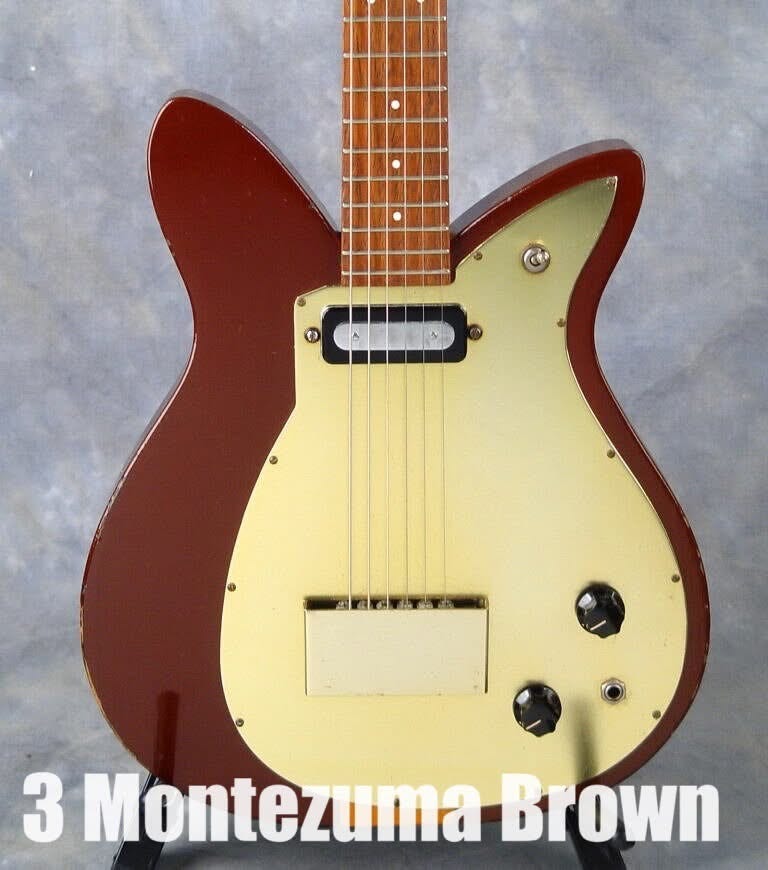
4) Turquoise Blue (1956-1957): A metallic Turquoise used on the Combo 600 & 800.

5) Jetglo JG (“Jet Black” from 1957-1959 and 1965-1966, “Black Diamond” from 1960-1964; 1957-present): It’s a glossy black. What else is there to say?
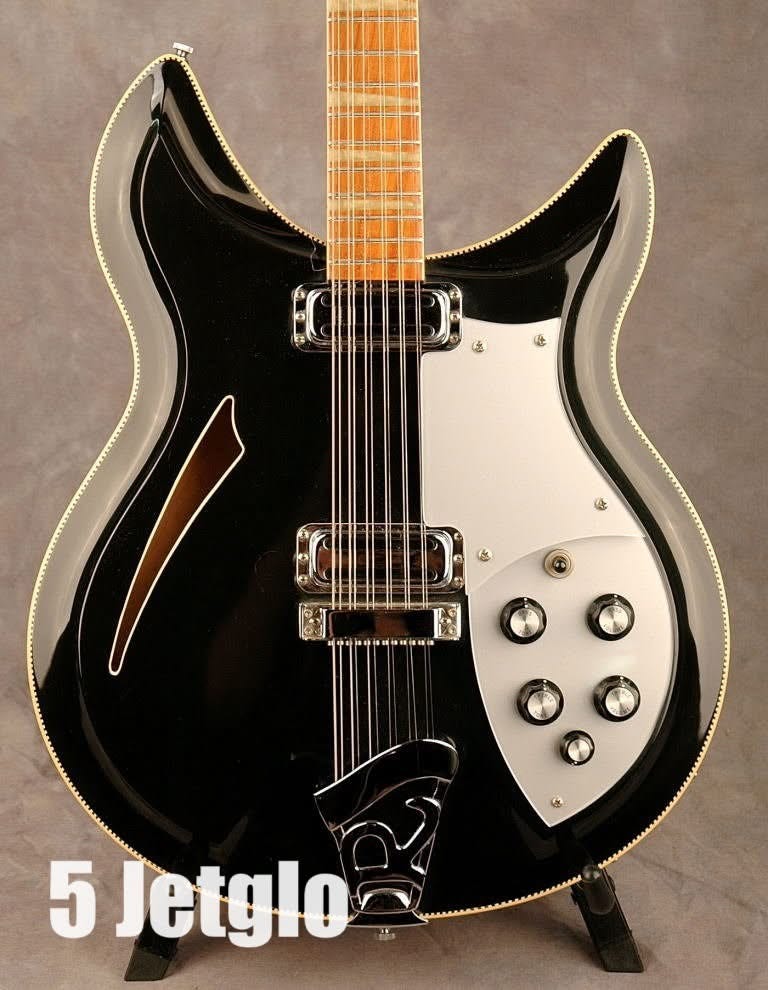
6) Mapleglo MG (“Natural” from 1957-1966; 1957-present): Many of the first instruments to get a “Natural” finish were not in fact made of Maple. It took the company a few years to settle on maple as their wood of choice, having tried out alder and mahogany among others along the way. So “Natural” meant exactly what it sounds like: a clear coat over the natural wood’s color. The clear coat ambers over time, giving older guitars a mellow yellowed appearance. However, the UV cured top coat the company began using in 2009 is far less susceptible to this yellowing, meaning guitars made since then are unlikely to ever amber to the extent older guitars will.
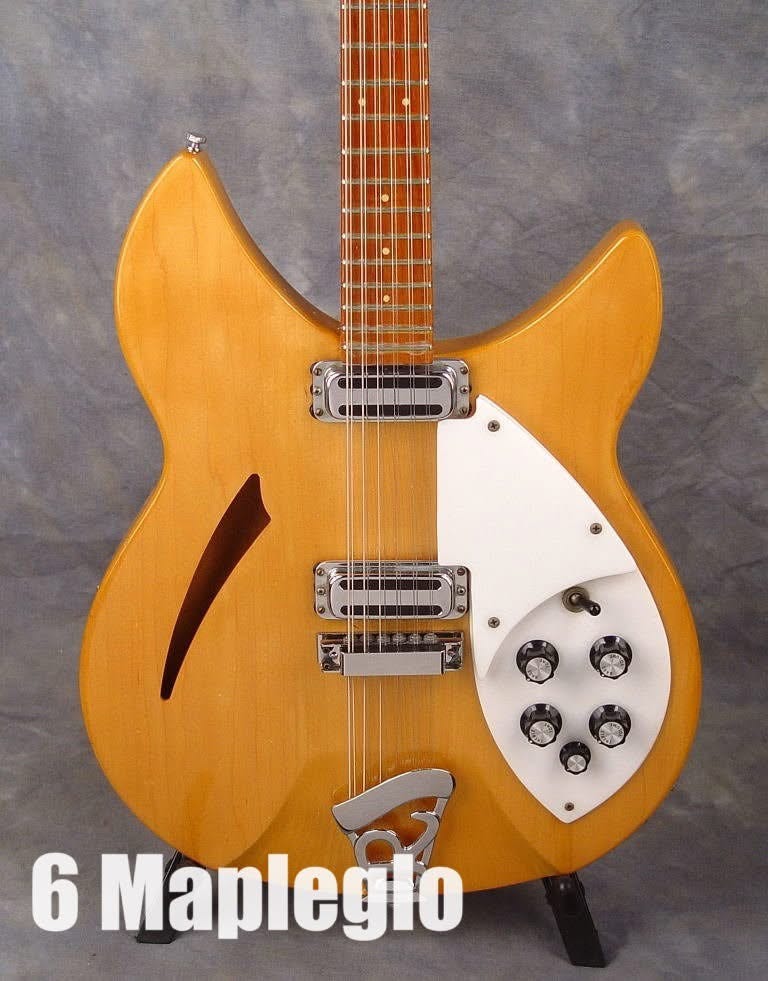
7) Shaded Brown (often incorrectly referred to as “Two-Tone Brown”) (1958): Exclusive to first year Capris—both short and long scale—a two tone brown sunburst with a very dark brown rim fading to an almost clear center. Montezuma Brown Version 2 (see number 33 below) is very similar.
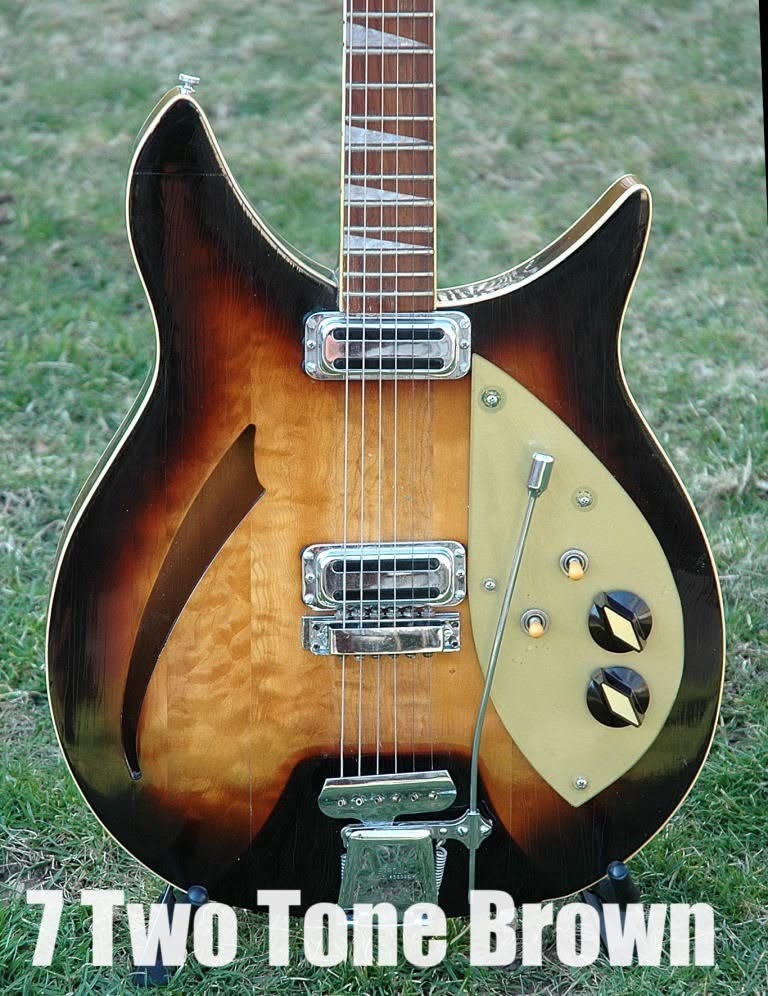
8) Autumn Gold (1958): Exclusive to first year Capris—both short and long scale—a red to orange/gold sunburst. It’s not quite Fireglo, but it might just be Fireglo’s daddy.
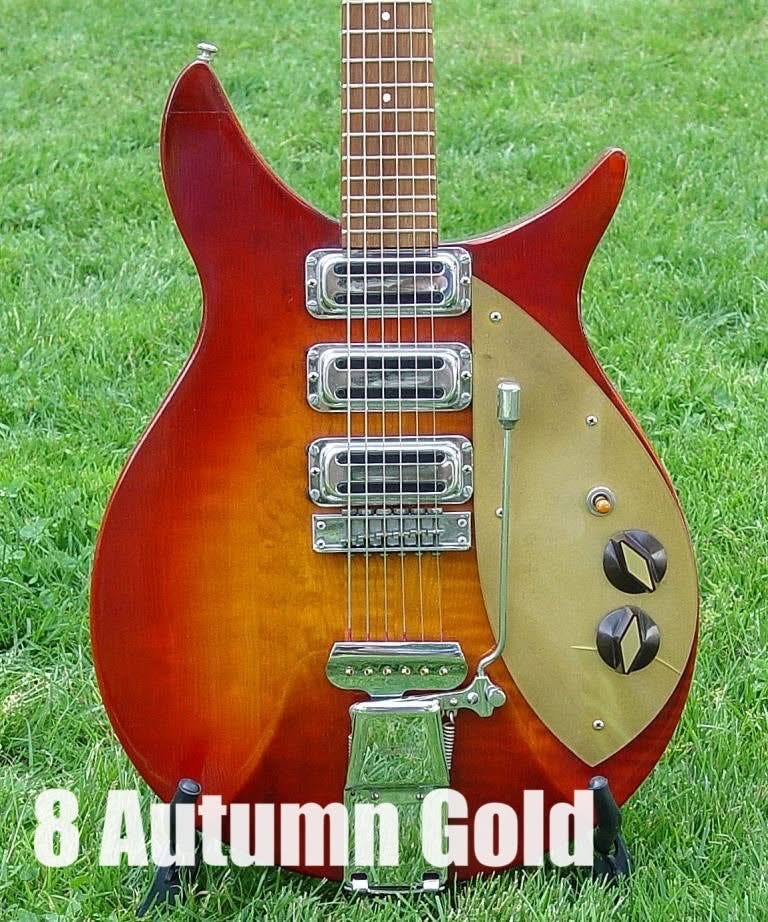
9) Autumnglo AG (Version 1, “Autumnglow” 1959-1966). The first Autumnglo guitars were an evolution of Two-Tone Brown with a lighter brown rim and a reddish transition to an amber center. Over time the rim grew redder, and it honestly can be hard to distinguish 60’s Amberglo guitars from Fireglo, but Amberglo guitars from this period tend to have a less sharp transition from rim to center and a more orange center.
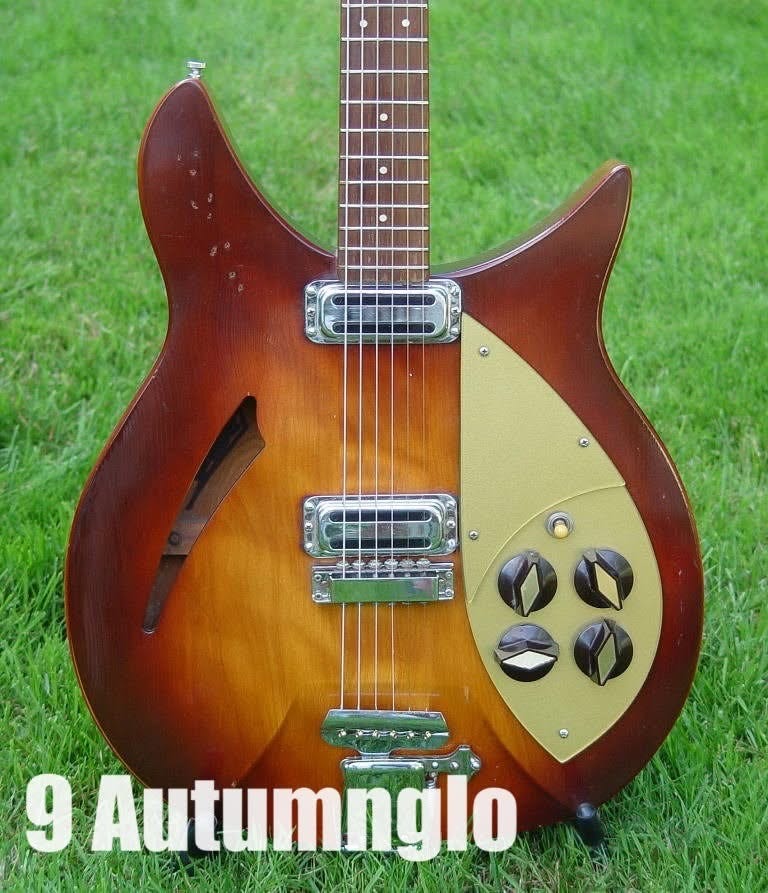
10) Fireglo FG (“Fireglow” from 1959-1966; 1959-present): Some would say this is the essential Rickenbacker color—but there has been so much variance in Fireglo through the years it is hard to define. It’s a red burst pattern, but the rim can range from almost black to brownish to crimson to bright red, and the center can go from almost bare wood to amber to orange to pink…but they are all Fireglo. The yellowing with time of the topcoat can also significantly impact the overall effect. Guitars with a bright red rim and an abrupt transition are often referred to as “Clownglo”.

11) Burgundy BG (1964-1966, “Burgundyglo” from 1967-1975, “Burgundy” from 1976-1984, 1999, 2002 Color of the Year): The first known Burgundy guitar was a 375 famously custom-ordered by Randy Bachman in 1964, but the color had already been in use by the factory for several years on the 100 lap steel. Burgundy is right up there with Fireglo in terms of how much the color varied over the years—it can go from a dark eggplant color to a light wine red—and everything in between. It also varied in opacity, from extremely transparent to almost completely opaque on the 1999 425/450V63 reissues /2002 Color of the Year version. Once the -glo nomenclature was standardized in 1967, the color was referred to as “Burgundyglo” until the 1976 price list when the “-glo” disappeared for reasons unknown. It was referred to as “Burgundy” thereafter.

12) Redburst (1966): OK, I’m kind of cheating here because this is not an official “factory” color name—it is unclear if one even exists—but enough of these exist and you hear the term enough that it deserves mention. A black to red burst very reminiscent of 60’s Japanese guitars, a number of 1966 Rose Morris guitars had this finish applied at the factory at Rose Morris’s request for a red burst.

13) Azureglo AG/AZG (1967-1984): A deep blue brighter than Navy Blue but darker than Electric Blue, it can green very slightly as the topcoat ambers. Conventional wisdom—as confirmed by John Hall—is that the color was inspired by the paint on a Volkswagen “across the street from the factory”—probably VW Blue.

14) Moonglo (1968): Another cheat because this is not a factory name—again, we’re not sure if one even exists—but it’s a name you hear a bit so I’m including it. Not a lot is “officially” known about the backstory, but there are at least 5 different guitars that can be found on Ron O'Keefe’s website (and a couple more on the register and likely more still out there) made in 1968 that feature this finish—a red burst that fades from a very dark cherry red (but NOT black) to a “watermelon” color in the middle. Why Moonglo? According to Ron an editor he was working with at Premier Guitar asked him what color it was and he said it was a dark Fireglo that kinda looked like Autumnglo, and she said “it looks like Moonglo to me” and it stuck.
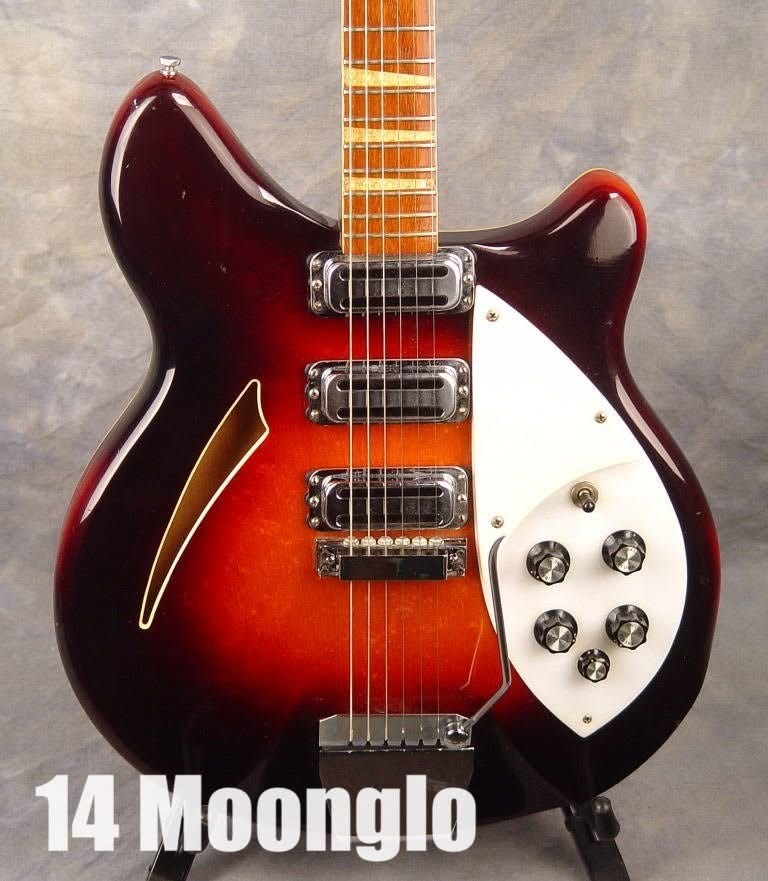
15) White WHT (1974-1999). White first appeared on the price list in 1976, but production appears to have begun in earnest in 1974. Earlier examples—all the way back to Combo 600/800s exist, but these early examples are probably one off/show/custom orders. During the 1970s the color was used almost exclusively on the 4000-series basses and 480-series guitars, almost always with black binding and plastics, although a handful of 300 and 400 series guitars from this era can also be found in White. It was also an option on the 430 and 3000-series basses. Once the black hardware/black trim era began around 1985, the color moved to all non-reissue models, almost always with BH/BT. Because the topcoat tends to yellow over time, finding guitars that are still a bright White today can be very difficult.

16) Walnut WAL (1974-1985): Walnut first appeared on 4000-series basses in 1974. For 1974 & 1975 only, the finish was a transparent, walnut-colored solid finish with no shading—there was no “burst” pattern. The whole guitar was the same color. Starting in 1976 the finish changed to a two color translucent “walnut to brownish-yellow” burst pattern and was made available on all guitars. 70s/80s Walnut and Autumnglo are often mistaken for each other—the key difference is that Walnut is a gloss finish and Autumnglo is matte. Autumnglo is much rarer…if you’re not sure what it is, it’s probably Walnut.
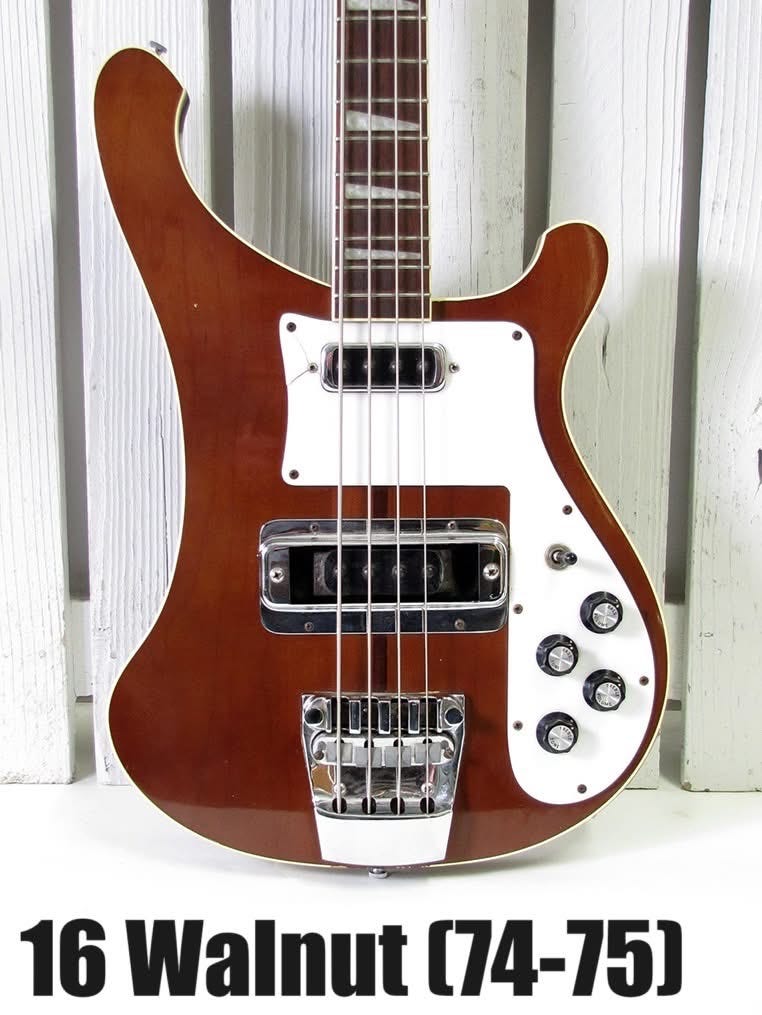
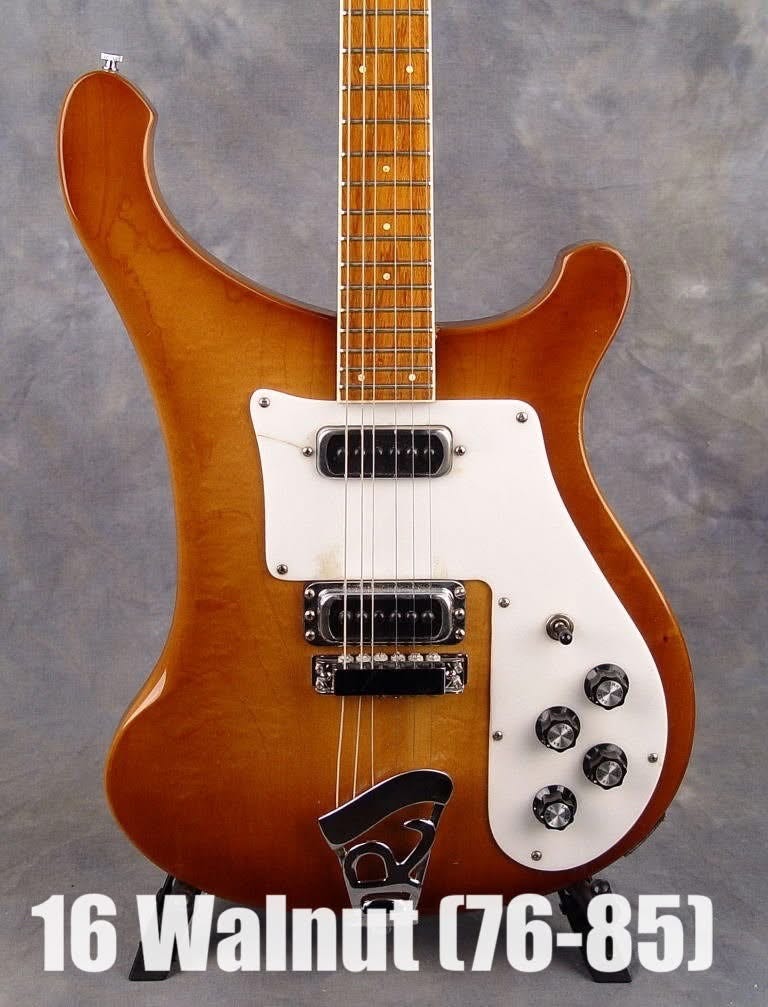
17) Autumnglo ATG/AG (Version 2, 1975-1985). The second version of Autumnglo appeared in 1975 on 4000-series basses. Like Walnut, it is a two-color, translucent “walnut to brownish-yellow” burst pattern, but unlike the gloss Walnut finish it is matte. Because playwear can buff a matte finish to a gloss, it can be very easy to misidentify an Autumnglo guitar as Walnut. Check the low-touch areas like the headstock (especially the back), under the strings, etc. If it’s not glossy there, it’s Autumnglo. Like Walnut, the color was made available on all guitars in 1976. Because the red in the Fireglo of this era can turn orange-ish as it ambers, ambered Fireglos from this time often get misidentified as Autumnglo. But 70s/80s Autumnglo is brown, not orange. If the guitar has any reddish tint to it, it is probably not Autumnglo.

18) Matte Brown BRN (1975-1976): Available only on 3000-series basses and maple bodied 430s, this translucent light brown finish was matte in a “not fully buffed out” way as opposed to modern smooth flat finishes.
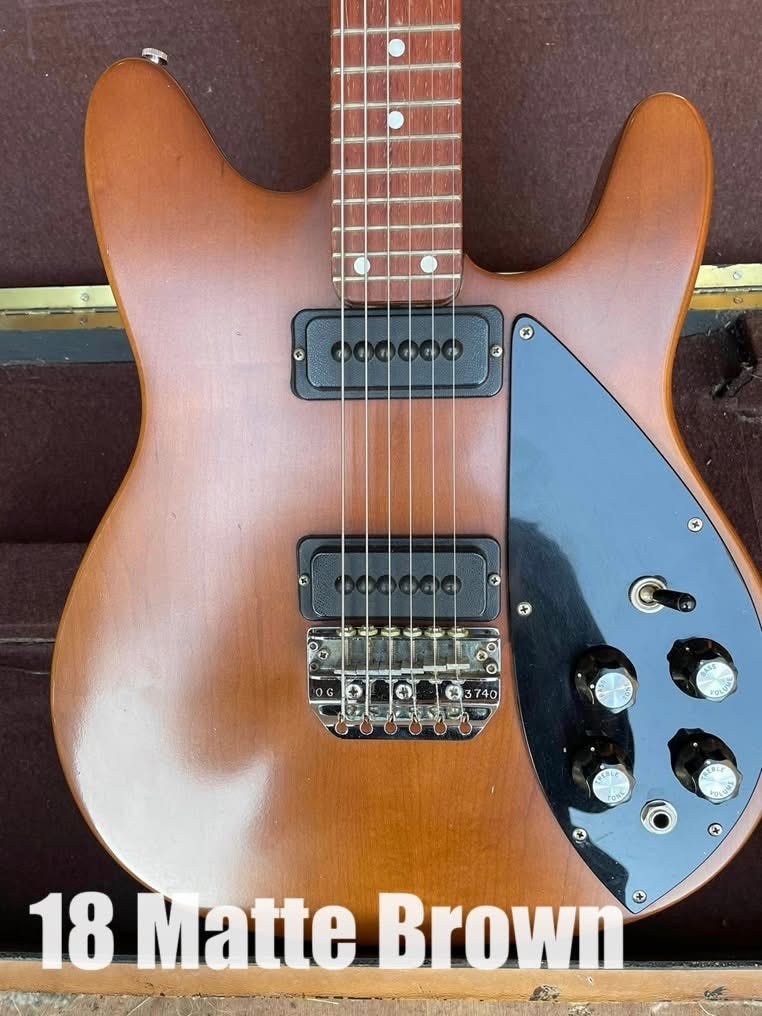
19) Matte Black BLK (Version 1, 1975-1976): Available only on 3000-series basses and the 430, this black finish was matte in “not fully buffed out” way as opposed to the smooth flat finish of today.
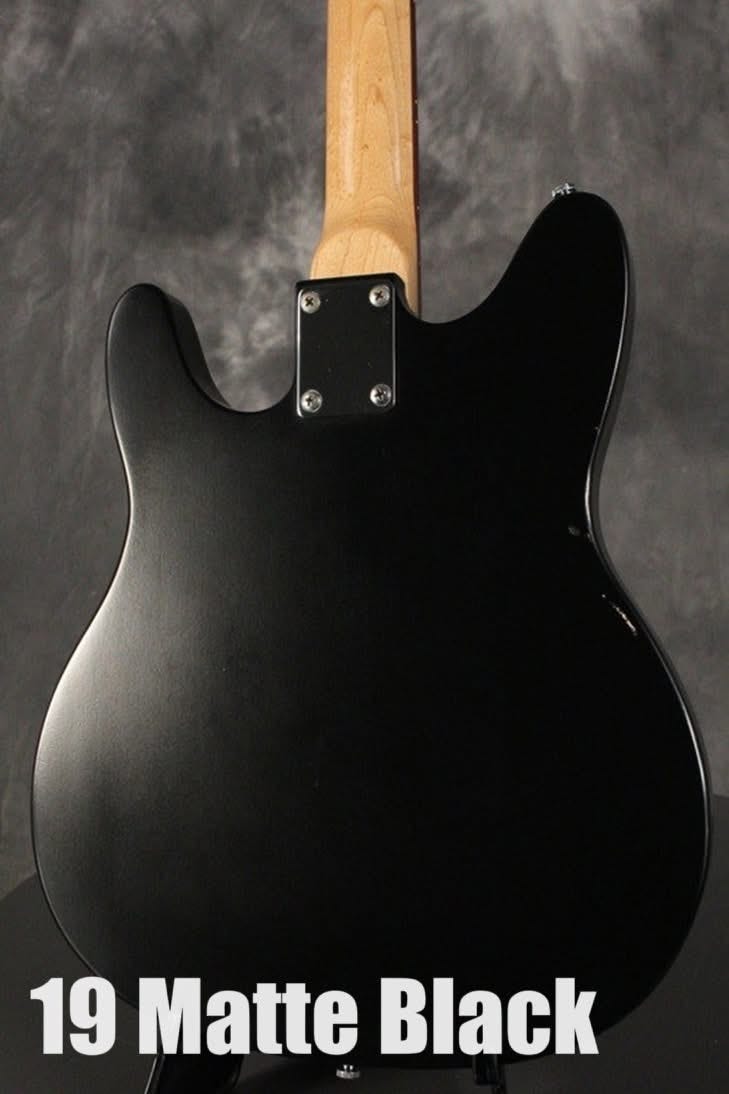
20) Natural Mahogany MHG (1975-1976): Available only on mahogany bodied 430s, it featured a clear matte coat over untinted mahogany.
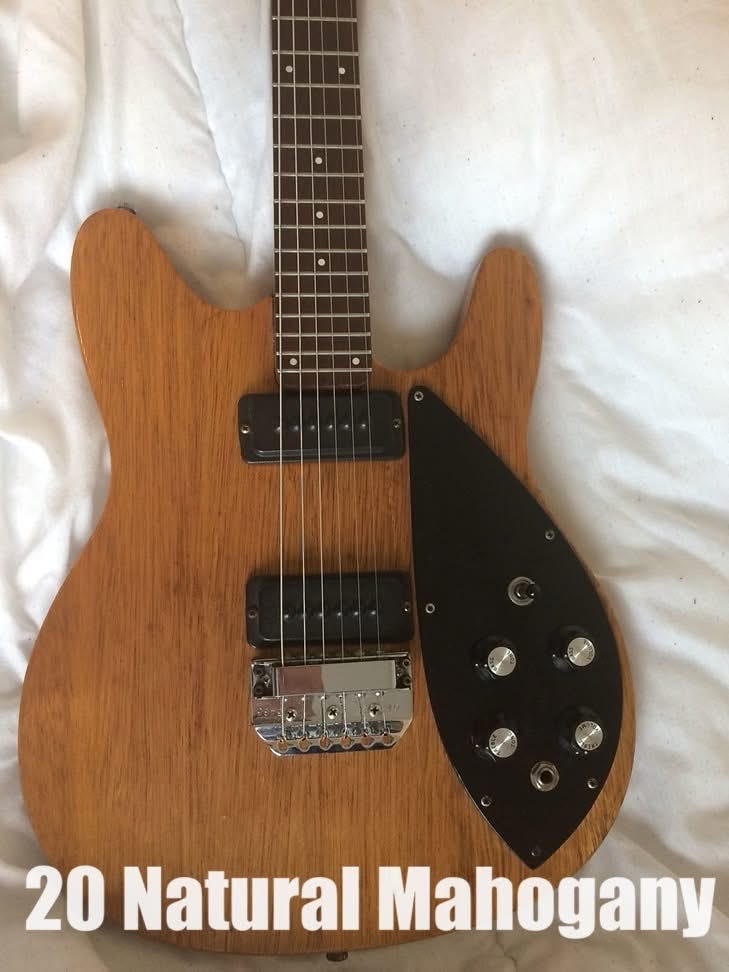
21) Ruby RBY (Version 1, 1981-1989, Version 2 2011-2016): There were two distinct versions of Ruby. The first version from the 80s featured a semi-transparent deep red coat over a silver base. The 2010s version was a metallic deep red. Pictures don’t do the difference justice, but if you look at them side by side it’s very clear which is which. It can be somewhat easy to mistake 80s Ruby for Burgundy from pictures alone, but you’ll never make that mistake with 2010s Ruby.

22) Midnight Blue MID (1985-2019): Launched along with Red and Silver to kick off the black hardware/black trim era, unlike those colors this metallic deep blue outlived the BH/BT era. Midnight Blue guitars from the 80s-90s came stock with black hardware/black trim (although they could be custom ordered with chrome/white), but as those phased out the color continued to be offered on most non-reissue models with chrome/white plastics.

23) Red RD (1985-1999): Unique to the BH/BT era, Red was exactly what it sounds like: a bright red paired as standard with black hardware/black trim, although it could be custom ordered with chrome/white plastic. Available on most non-reissue models.
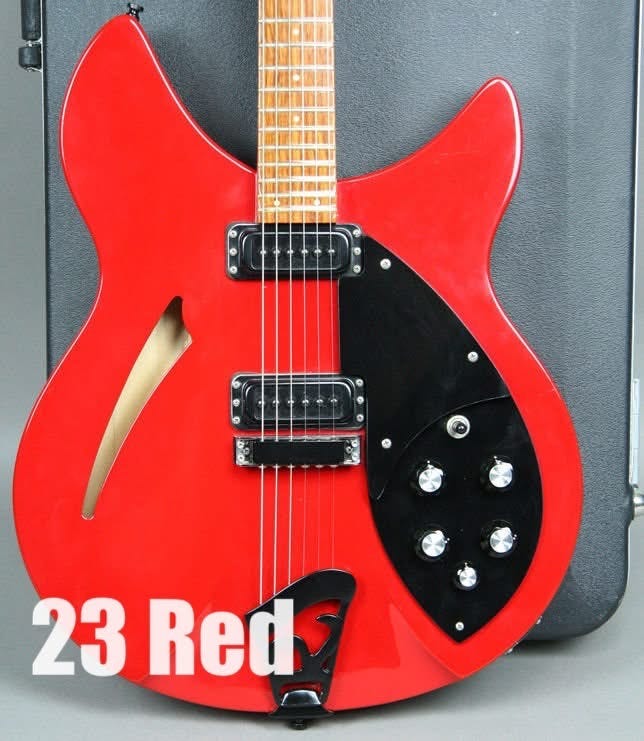
24) Silver SIL (1985-1990): The rarest and shortest lived color of the BH/BT era, Silver was a metallic light silver color than came standard with black hardware/black trim, although it could be custom ordered with chrome/white. For some reason Silver seems somewhat less likely to amber than other colors, although some have “greened” and a handful appear almost gold due to heavy top coat yellowing.
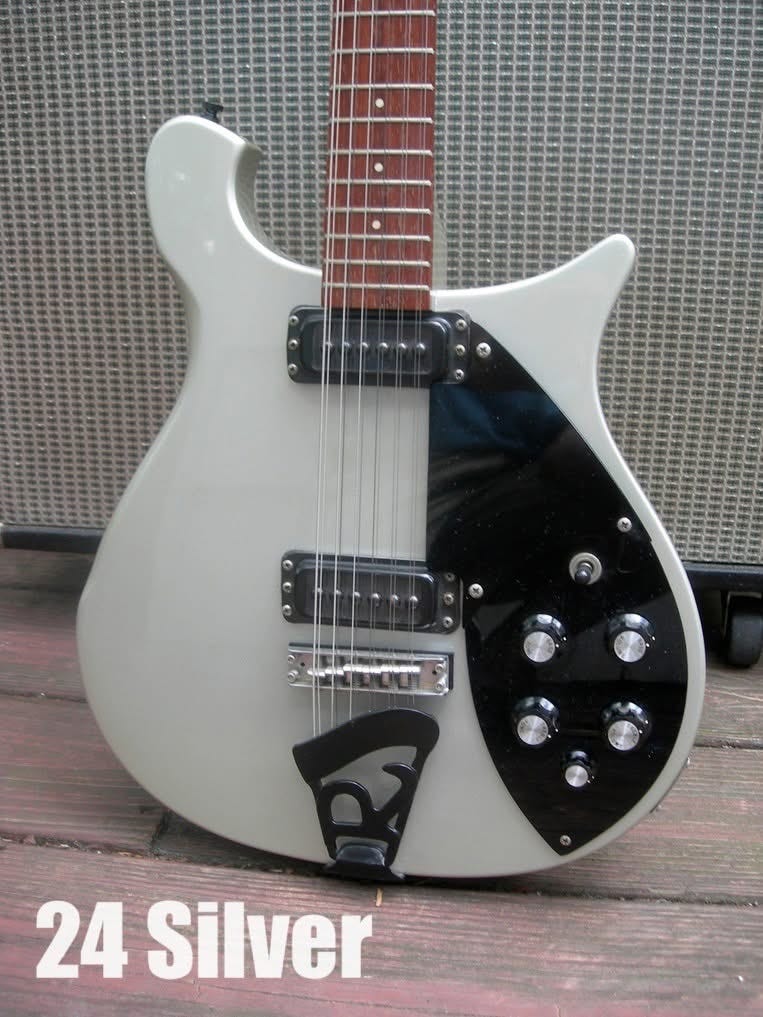
25) Natural Oil Finish (1992-2009, 2014-present): The 650 Dakota and Sierra launched in 1993 featured walnut body wings attached to a through maple neck. These guitars sported a rubbed oil finish without any topcoat. All subsequent walnut bodied guitars (4004 Laredo, Ci, LK; 380, 330W, 360W, 4003W, 4003S/AC, etc) have had this rubbed oil finish. However, the finish actually first appeared in 1992 on a custom run of walnut bodied guitars made for RCA records.
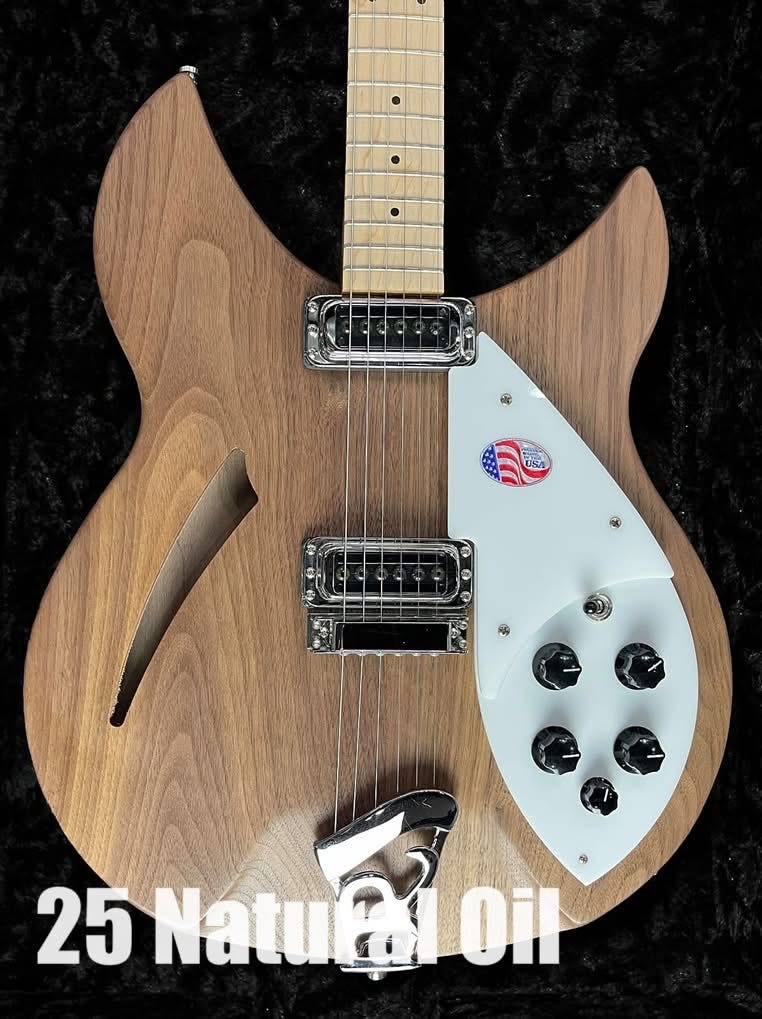
26) Turquoise TUR (1992-2003): The slightly metallic Turquoise first appeared on the 650 Atlantis in 1992 but only on the body wings with the neck left natural, harkening back to the Combo 400/450 of the 1950s. In 1994 the color was added to the catalog for all non-reissue models—although runs would occur of reissue models over the next several years.
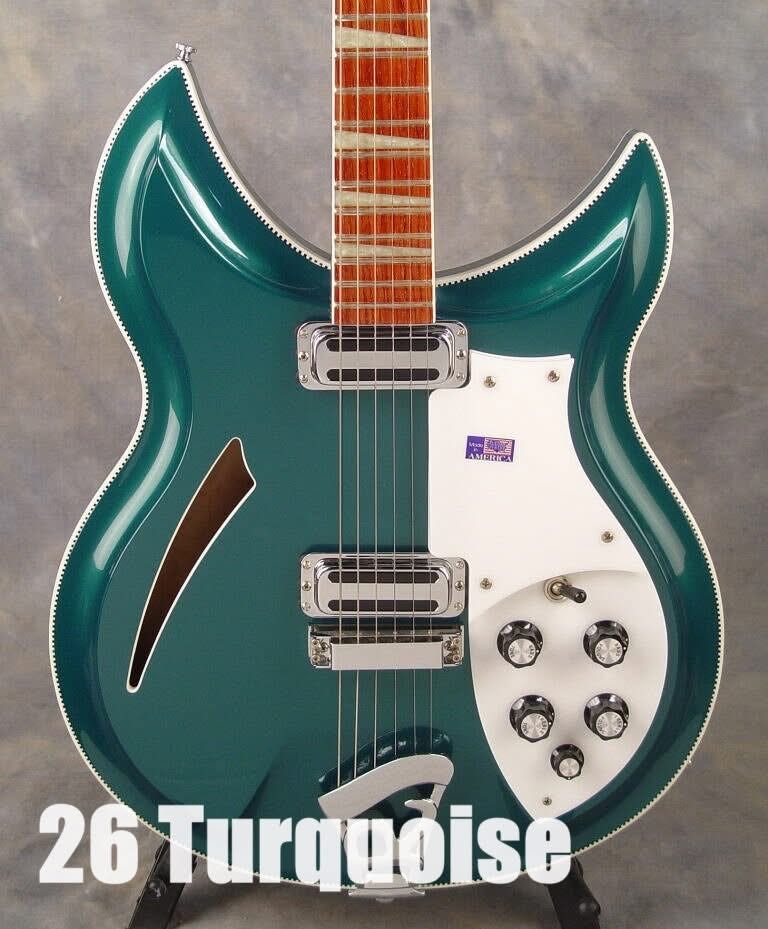
27) Vermillion (1992-2000): The top of the line 650-series Excalibur (later Frisco) featured body wings made of vermillion, a deep crimson/purplish wood finished over with a clear topcoat.
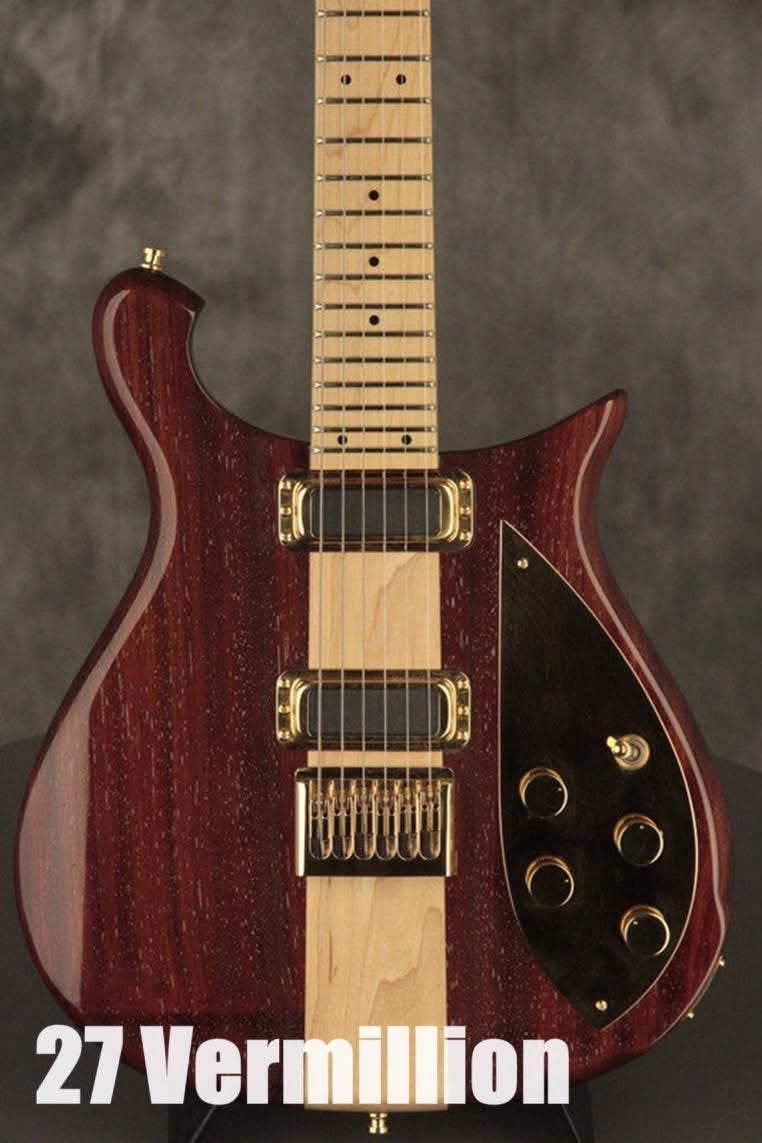
28) Sea Green SG (2000): An almost teal aqua green, Sea Green was the first entry in the “Color of the Year” series. Each year from 2000-2006 the company announced a special color, and for that calendar year any guitar in the line could be ordered in that color although production could carry over into subsequent years as they waited for a production run of the custom ordered model to apply the special paint. Actual Sea Green production thus ran from 2000-2002.
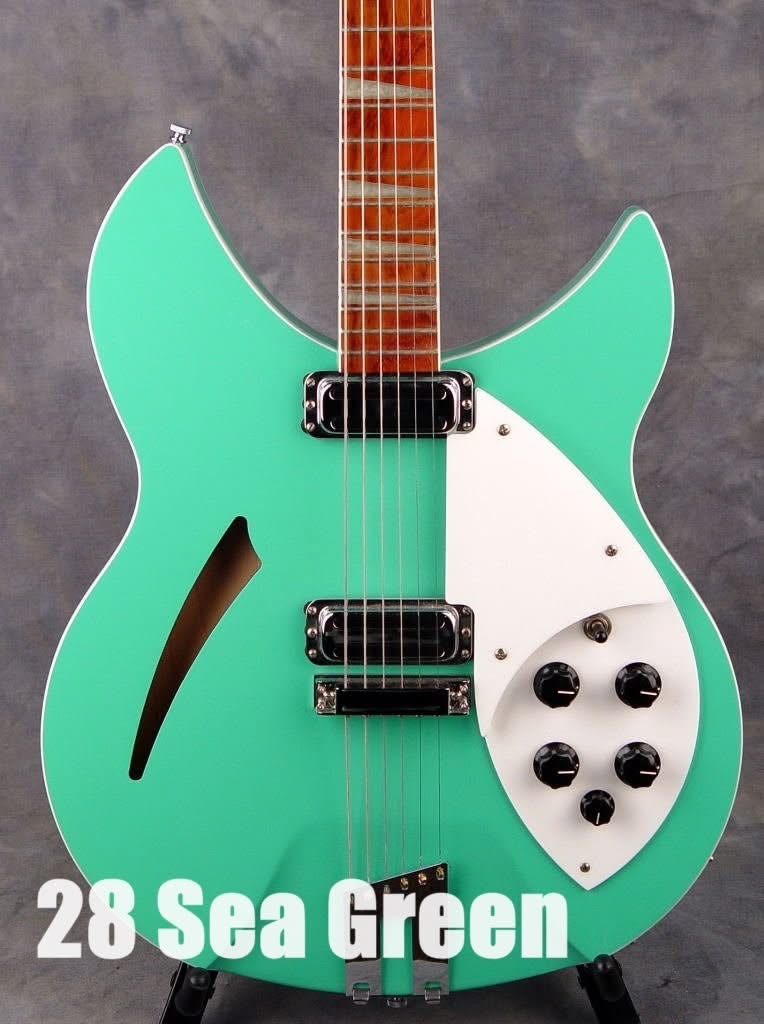
29) Desert Gold DG (2001): The 2001 Color of the Year, Desert Gold was a metallic gold much lighter in hue than a Gibson goldtop. Actual production ran from 2001-2002.

30) Trans Blue TB (2001-2016): A transparent dark blue, available only on the 4004 Cii. Several examples have turned purple over the years from UV exposure.
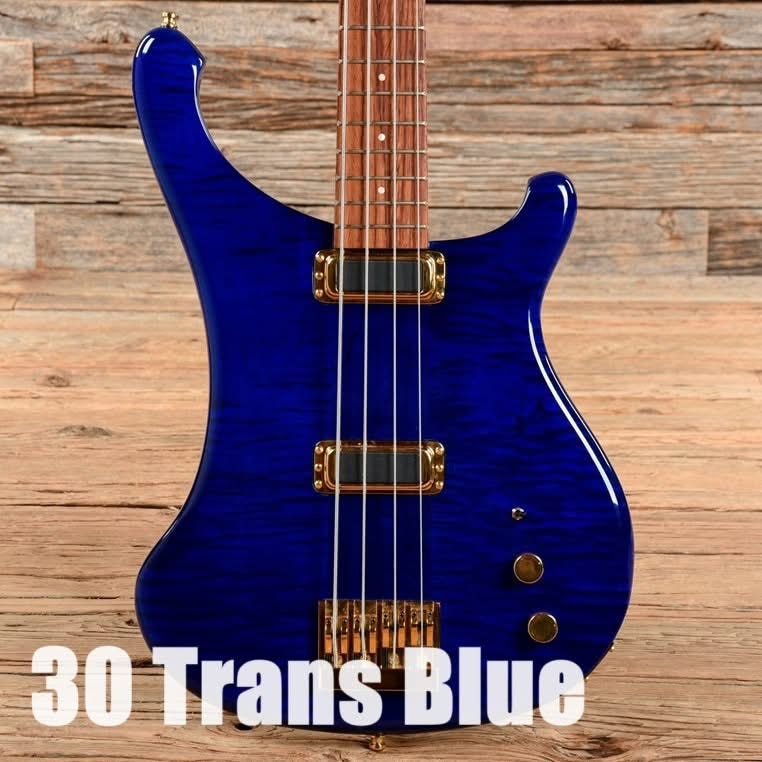
31) Trans Green TG (2001-2016): A transparent dark emerald green, available only the 4004 Cii. Several examples have taken on a yellow to brown tint over the years from UV exposure.
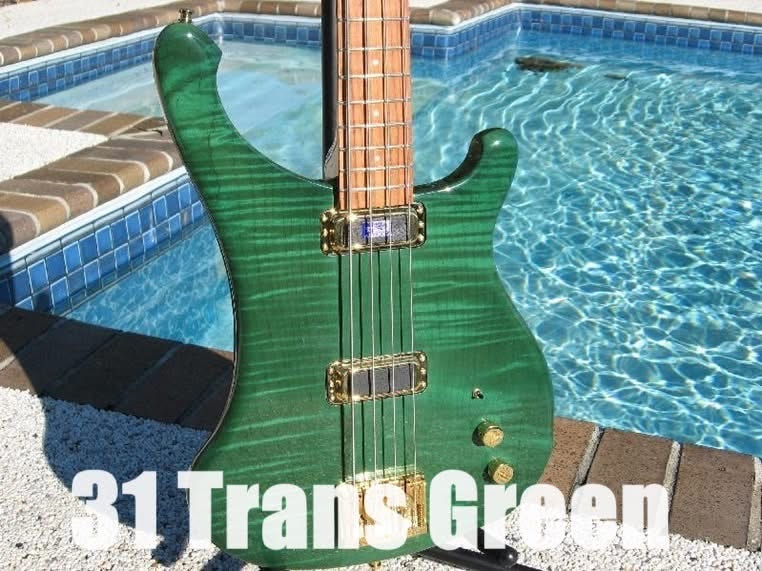
32) Trans Red TR (2001-2016): A transparent dark red, available only on the 4004 Cii.

33) Montezuma Brown MB (Version 2, 2003): The 2003 Color of the Year, Montezuma Brown has nothing in common with its 1950’s namesake and is indeed much closer to the 50’s colors Two-Tone Brown and Autumnglo. A two-tone brown burst with a dark rim fading to an almost clear center. Actual production ran from 2003-2006, and a few special runs have also occurred in the years since.

34) Blue Boy BB (2004): Blue Boy was the 2004 Color of the Year, and was a baby blue color similar to Fender’s Sonic Blue. This color seems especially prone to yellowing in high contact areas. Actual production ran from 2004-2006, with at least one special run since (in 2014) for the Japanese market.
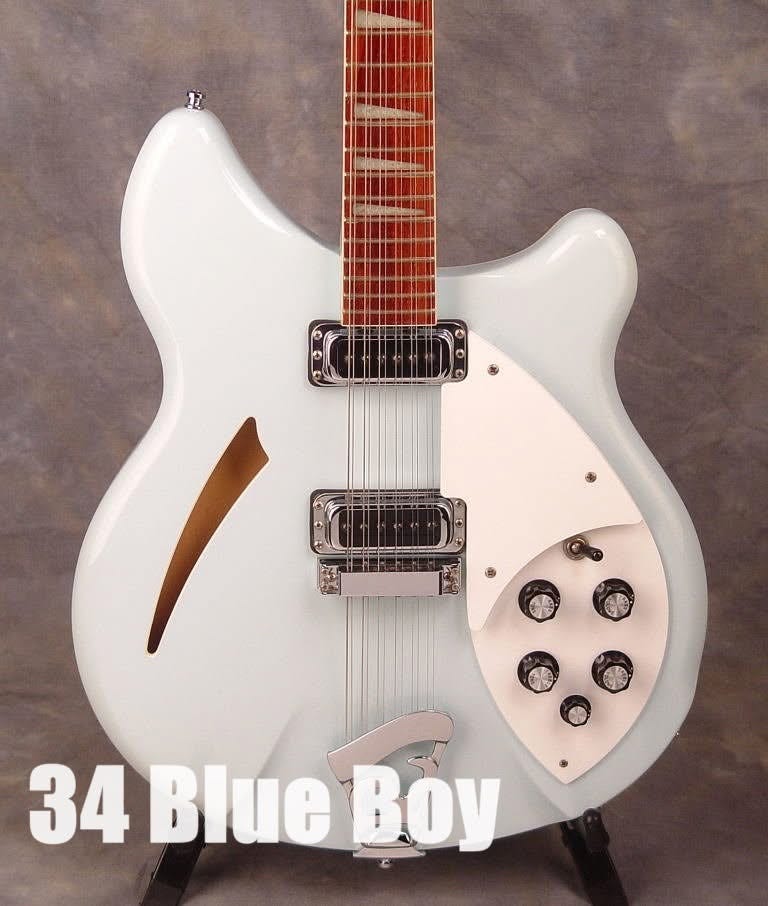
35) Blueburst BBR (2005): The 2005 Color of the Year, Blueburst was a…dark to light blue burst. I believe it was the same finish used in Trans Blue, only applied in a burst pattern. UV exposure can fade the blue to shades of purple or grey.
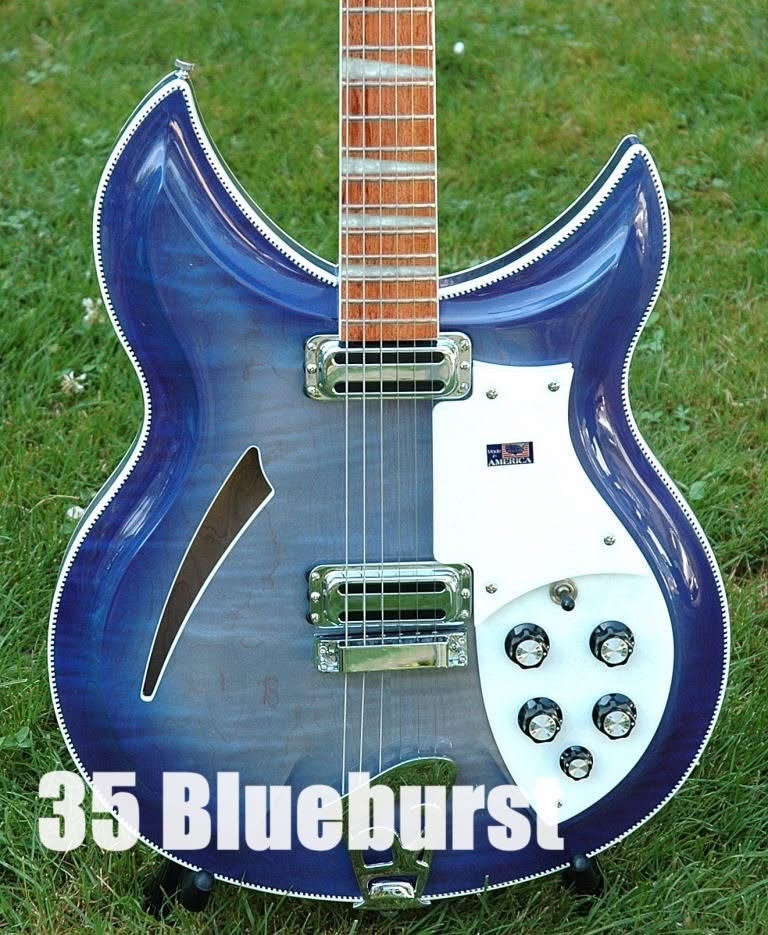
36) Amber Fireglo AFG (2006, 2022): The 2006 and final Color of the Year, Amber Fireglo applied a tinted topcoat over a standard Fireglo finish to simulate a vintage, ambered finish. COY production ran from 2006-2008, and the finish was offered as standard on the 4005XC 90th Anniversary bass guitar although the effect was achieved without a tinted clear coat, leaving the inlays and binding white. There have also been a number of special runs in the years between.

37) Dark Cherry Metallic DCM (2007): To celebrate Rickenbacker’s 75th anniversary, 75 each of the 330, 360, 620, and 4003 were sold with a special Dark Cherry Metallic finish and other special appointments. The finish was basically as described. Unfortunately, something went wrong in the paint process, and today a not insignificant percentage of them suffer from either flaking paint, excessive checking, or a “gummy” or sticky finish.

38) Matte Black MBL (Version 2, 2018-present): A very smooth but flat black, as opposed to the rough “not fully buffed out” Matte Black Version 1 of 1975-1976. First appeared on special runs in 2009 and 2016-2017 (“Noir” runs), but entered standard production on the 330 and 4000 basses in 2018.
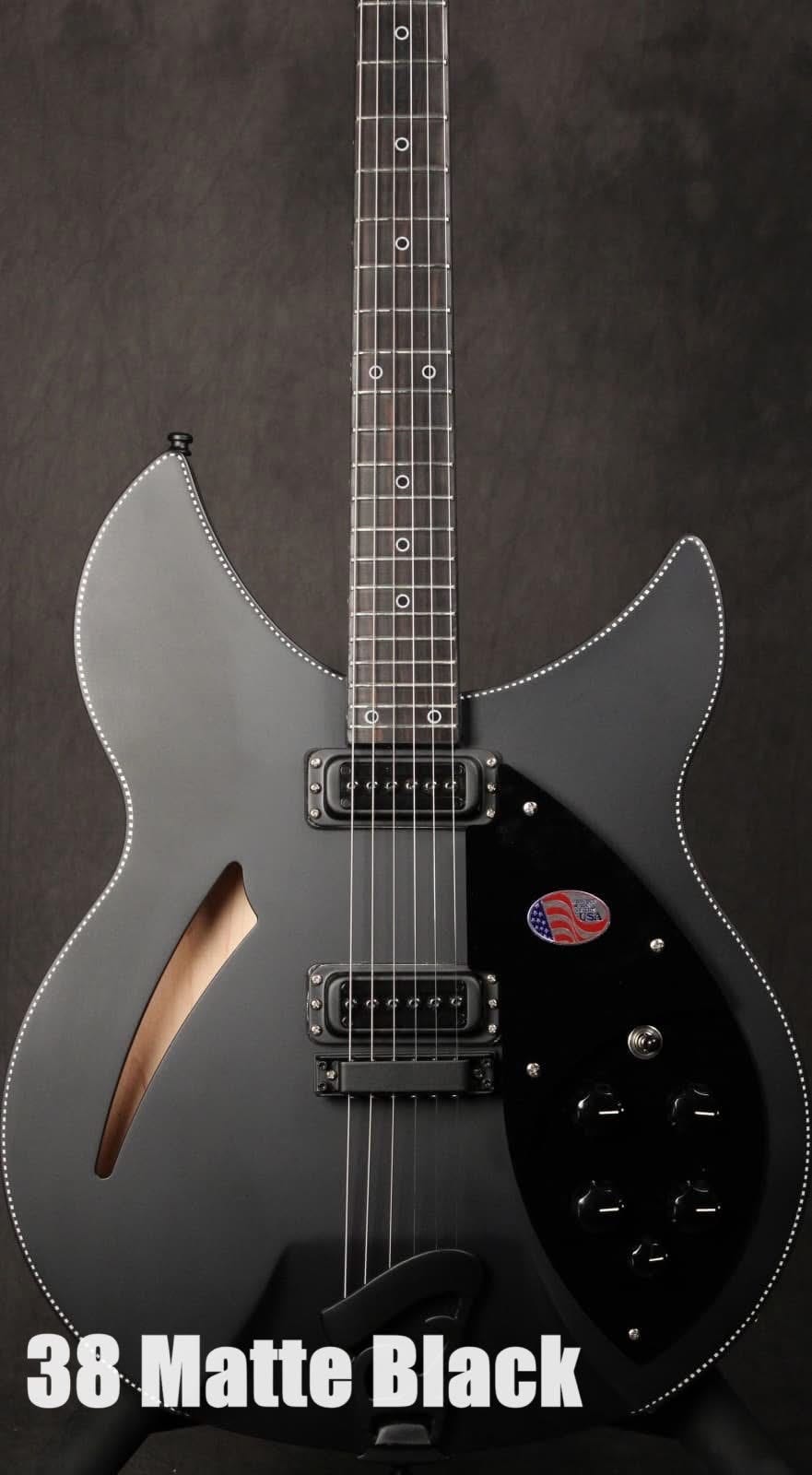
39) Tobaccoglo (2022): A dark brown to amber burst, one of the two colors (along with Jetglo) offered on the 90thAnniversary 480XC. A 2012 special run with the same name is VERY different, with a very orange center.

And that’s everything you want to know about factory colors. Tell me what I missed or got wrong!





Thanks for this interesting post. I wondered if Tuxedo is a standard or a special finish ? I have a 1980 370 in this light butter color, black pickguard and logoplate, and chrome tailpiece, pickups and tuners. It seems unusual...